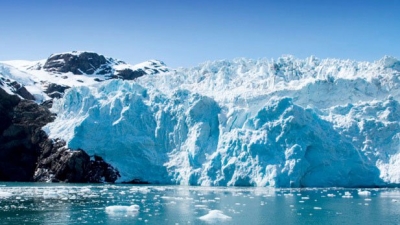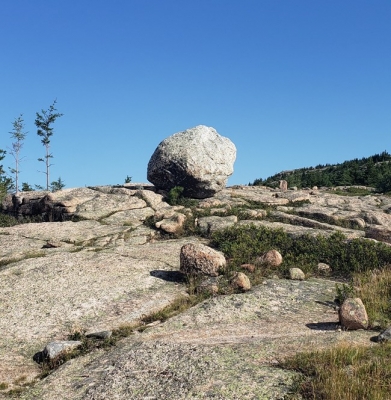
| The variety of loose rocks and sediments dumped over landscape give evidence about the type of glacier and glaciation that took place in the area. A moraine ridge is the landform created by the debris left by a glacier after it has moved away. Moraine ridges are given names according to the size of debris and how they were formed. Examples are: lateral moraine, recessional moraine, medial moraine and ground moraine. |
A moraine is material left behind by a moving glacier. This material is usually soil and rock. Just as rivers carry along all sorts of debris and silt that eventually builds up to form deltas, glaciers transport all sorts of dirt and boulders that build up to form moraines.
Moraines only show up in places that have, or used to have, glaciers. Glaciers are extremely large, moving rivers of ice. Glaciers shape the landscape in a process called glaciation. Glaciation can affect the land, rocks, and water in an area for thousands of years. That is why moraines are often very old.
Lateral Moraine
A lateral moraine forms along the sides of a glacier. As the glacier scrapes along, it tears off rock and soil from both sides of its path. This material is deposited as lateral moraine at the top of the glacier’s edges. Lateral moraines are usually found in matching ridges on either side of the glacier. The glacier pushes material up the sides of the valley at about the same time, so lateral moraines usually have similar heights.
Medial Moraine
A medial moraine is found on top of and inside an existing glacier. Medial moraines are formed when two glaciers meet. Two lateral moraines from the different glaciers are pushed together. This material forms one line of rocks and dirt in the middle of the new, bigger glacier.
Supraglacial Moraine
A supraglacial moraine is material on the surface of a glacier. Lateral and medial moraines can be supraglacial moraines. Supraglacial moraines are made up of rocks and earth that have fallen on the glacier from the surrounding landscape. Dust and dirt left by wind and rain become part of supraglacial moraines. Sometimes the supraglacial moraine is so heavy; it blocks the view of the ice river underneath.
Ground Moraine
Ground moraines often show up as rolling, strangely shaped land covered in grass or other vegetation. They don’t have the sharp ridges of other moraines. A ground moraine is made of sediment that slowly builds up directly underneath a glacier by tiny streams, or as the result of a glacier meeting hills and valleys in the natural landscape. When a glacier melts, the ground moraine underneath is exposed.
Terminal Moraine
A terminal moraine is also sometimes called an end moraine. It forms at the very end of a glacier, telling scientists today important information about the glacier and how it moved. At a terminal moraine, all the debris that was scooped up and pushed to the front of the glacier is deposited as a large clump of rocks, soil, and sediment.
Credit: National Geographic
Picture Credit : Google






